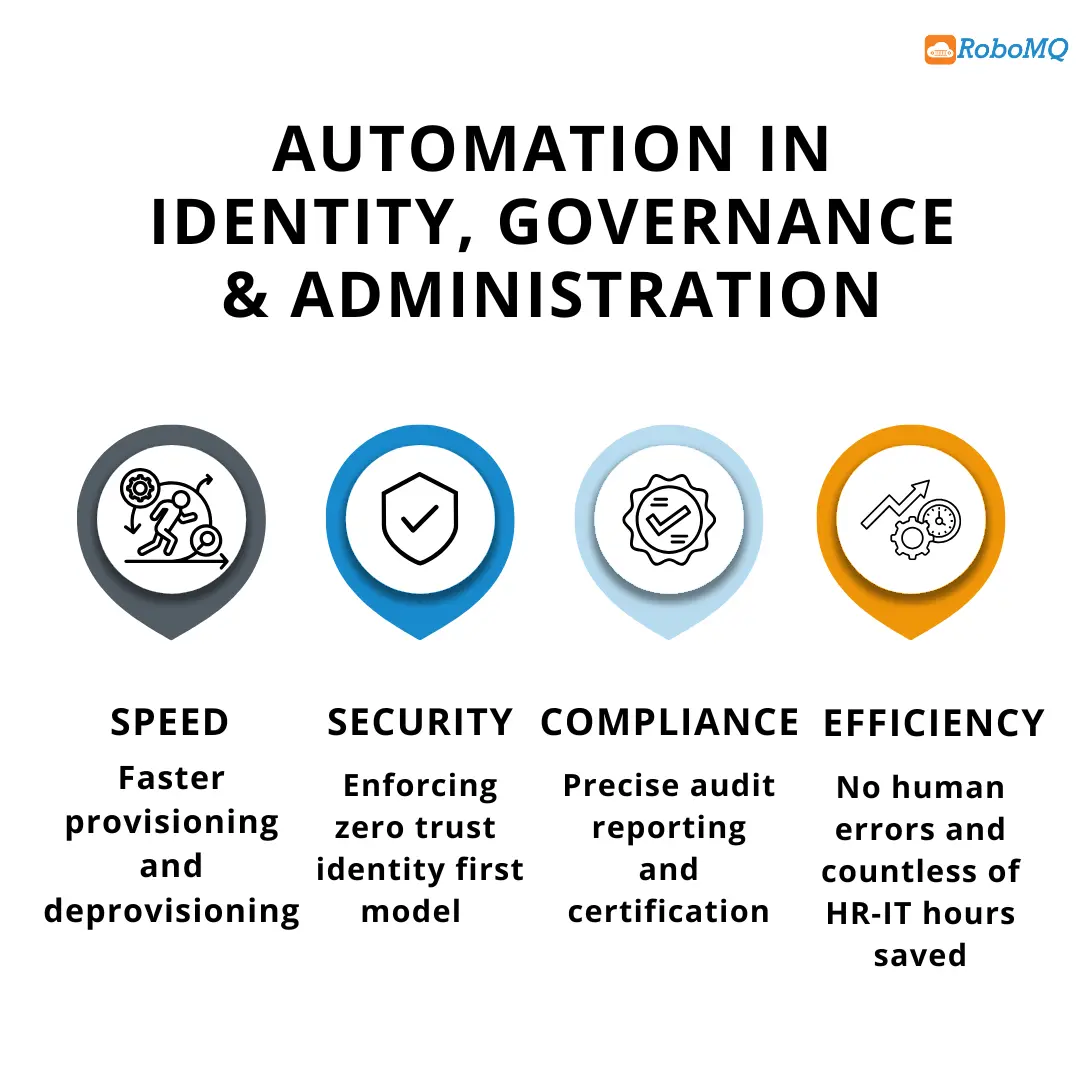

When HR adds a new hire, directory and application accounts are auto-created with appropriate access rights.
Role updates in core systems trigger entitlement adjustments instantly and in line with policies.
As soon as employment ends, all associated identities across systems are deactivated. This reduces the window for orphan account exploitation.
Manual handling of joiner, mover, and leaver (JML) events leads to inconsistent access control, delayed deprovisioning, and elevated security risks. Automation ensures timely, accurate identity provisioning and deprovisioning, which enhances compliance, reduces insider threats, and supports audit readiness.
Hire2Retire integrates seamlessly with HR systems, directories, and ITSM platforms to bridge the identity lifecycle gap. It manages JML workflows across systems without replacing your core IGA tools, offering a lightweight yet powerful way to operationalize workforce identity governance.
Automated IGA workflows reduce human errors, speed up user provisioning, eliminate access sprawl, and significantly cut down the time to audit and report compliance. Organizations often see improvements in IT productivity by up to 30% and faster onboarding times by 70%, according to Zluri and CIOReview.